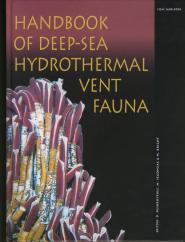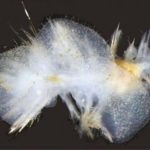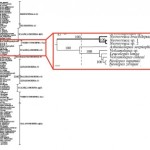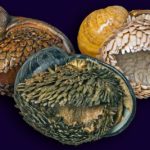
Clearly, last week’s Cephalopod Beak ID Contest was too easy! So This week’s contest is going to be a little harder. I’m testing you guys out, seeing where your limits are. This week I am highlighting the Handbook of Deep-Sea Hydrothermal Vent Fauna by veteran deep sea colleagues Daniel Desbruyères, Michel Segonzac and Monika Bright. It is a 2nd edition and was published by Biologiezentrum der Oberösterreichische Landesmuseen in Linz, Austria. It actually went out of print and they recovered their costs of production so they made it freely downloadable on their website!
Your task is to download and look at the amazing photos and line drawings of some of the planet’s most amazing critters. You will need to identify the species of worm using the clues in the poem below.
As always, fame and (not) fortune will follow as your name will be graced on the front page of the one and only Deep Sea News! First person to post a comment with the correct answer and include their name/pseudonym (or how you would like to be acknowledged) and a valid email address, will attain MAD TAXONOMIC SKILLZ STARDOM!
R U READY FOR THE ULTIMATE CHALLENGE!!!!!!
My mouth don’t look like much
But when its time to munch
I spit my jaws
bare teeth and alls
to make you part of my lunch
Though my home is hot as an oven
I wear armor 1 less than a dozen
Adorned with beads
Hiding gills like trees
3 pairs papillae for island lovin’






I’m not great with worms, but maybe Paralvinella unidentata?
Nope, but nice try! While P. unidentata lives in a tube, it does not “wear armor”. I’ll give a clue on Tuesday if no gets it.
Could it be Lepidonotopodium atalantae?
How about Thermopolynoe branchiata Miura 1994?
It has an eversible proboscis with dorsal & ventral jaws (“I spit my jaws”, lives near hot vents (“home is hot as an oven”), has 11 pairs of elytra (“armor 1 less than a dozen”), the elytra are covered with numerous brown papillae (“adorned with beads”), branchiae attached to the parapodia & hidden by the elytra (“hiding gills like trees”), and 3 pairs of ventral segmental papillae(“3 pairs papillae”).
Tim, very close! But there are 2 clues in the last sentence why it is not L. atalantae.
Winner!! Great job Leslie! Of course, I’d be disappointed if YOU came up with someone different? lol Your name shall be entered on the DSN Mad Taxonomic Skillz Wall of Fame!
Imagine how embarrassed I’d be if I got it wrong! Have to slink away in shame and start flipping burgers for a living…. Thanks for posting the link to the handbook. Our budget didn’t extend to buying a copy.
Its a fantastic resource! I was stoked when they put it up freely on the internet. I bought my own copy with personal funds when it came out.